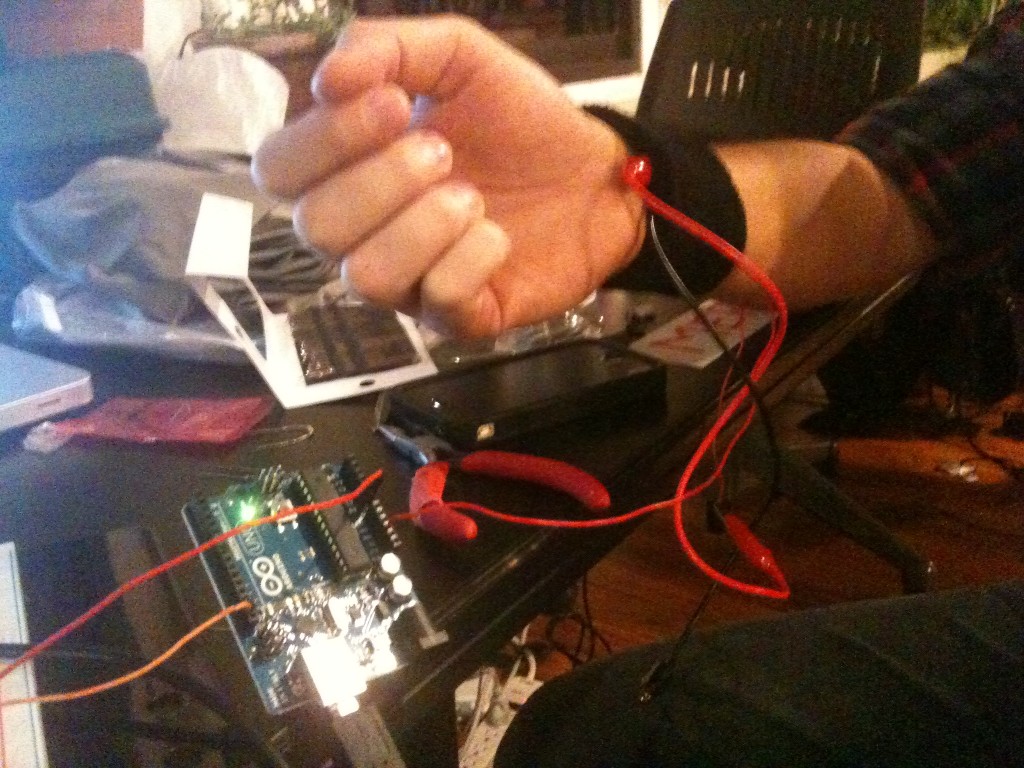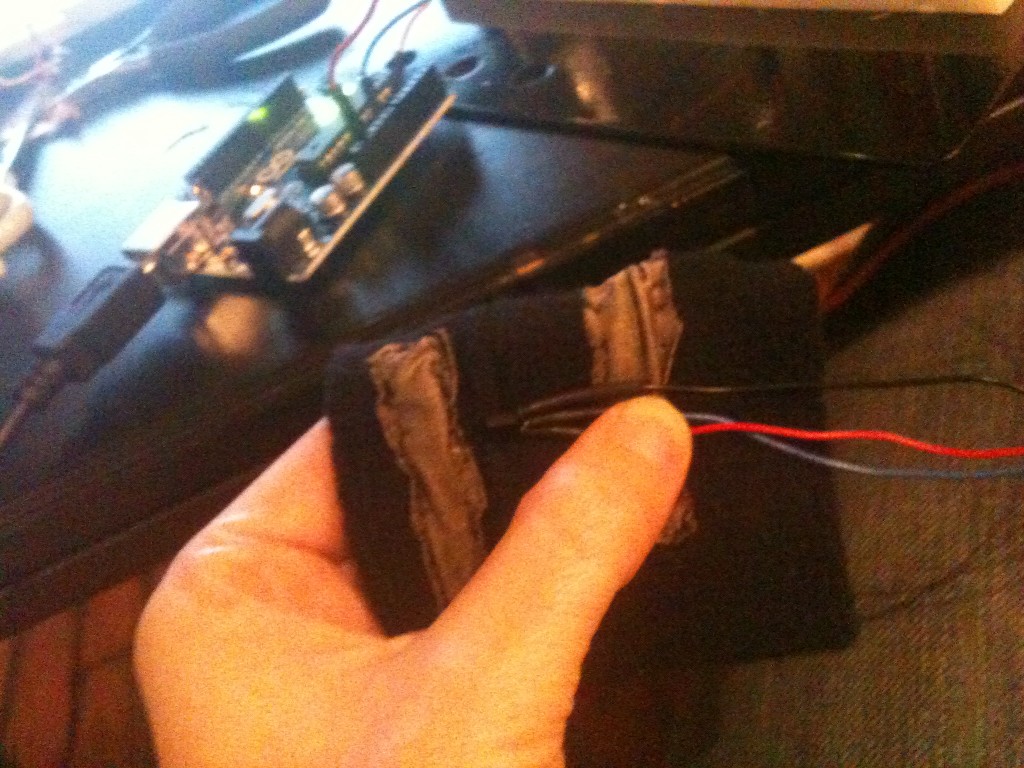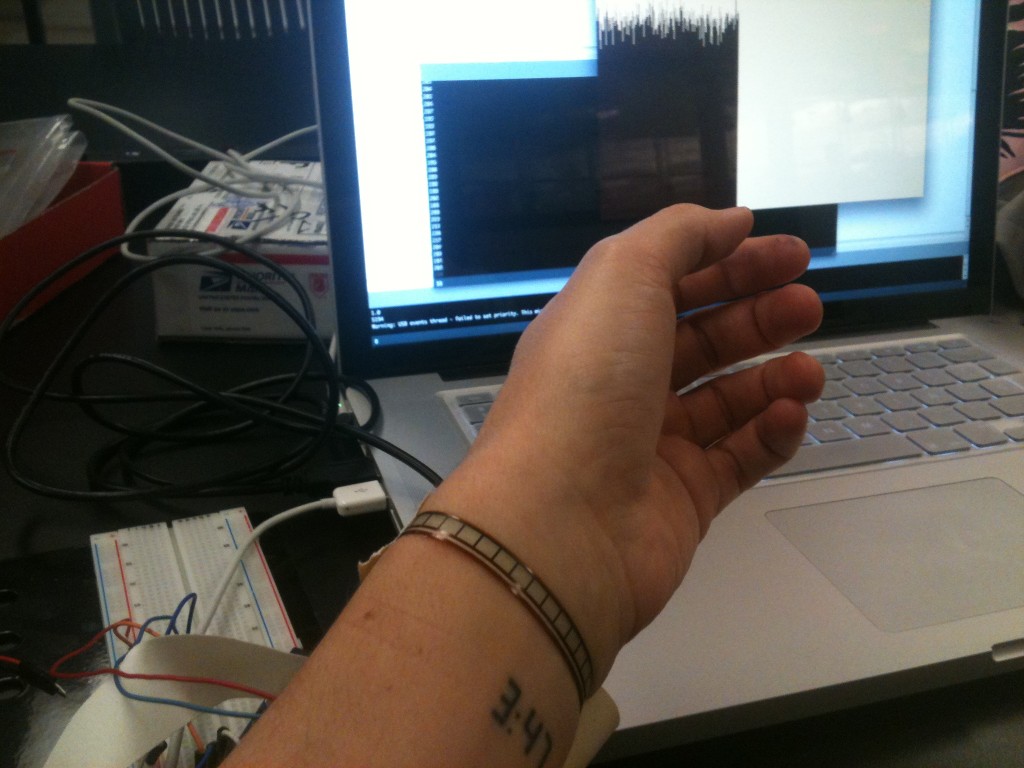According to the last results we had, we started working on a wearable prototype that could give us more stable lectures of the different sensors. We used for that one of those “tennis bracelets”.
We first incorporated two stripes of stretch conductive fabric to measure the GSR. We could see it working by adding some water on our skin and observe the different values, but it was tough to prove a secretion of sweat in the conditions where we were doing the tests. In this direction we both agreed we needed to incorporate ASAP a bluetooth transmitor and a phone that could collect the data. This way we could measure situations closer to a real scenario.
It was helpful having incorporated a way to visualize the results in Processing, in comparison of last time.
We tried then a temperature sensor more accurate than the one we used last time, recommended by Eric Rosenthal in ITP: the LM34 . According to the datasheet this component is sensitive to changes of ±½°F at room temperature. We tested it working properly but again it was difficult to witness a change of our skin temperature in those conditions.
Here are some pictures of both sensors incorporated to the bracelet:


We encountered some problems with the heart rate measurements, which point to be the hardest ones to measure from the wrist. We tried to incorporate the pulse sensor we used previously taking the measures this time form the top of the wrist and amplifying the output signal, but it did not work. Afterwards we noticed that the Opamp we were using from Sparkfun had two Capacitors that were blocking the DC lectures. The amplifier was designed to amplify AC signals, so this could cause that we couldn’t get any lecture at all going through it.
Eric suggested to try with a stretch sensor tied to the wrist but getting any conclusion or rythmical pattern out of the results seems barely impossible. Here is the image of this test:

Redesigning the amplifier circuit of Sparkfun and testing it again with the pulse sensor could give us some options then.
Finally we decided that it would be more efficient to start measuring Temperature and GSR in real situations while we work in parallel on a way to get the heart beat from the wrist, or maybe incorporating that one from the finger while we find a better solution.